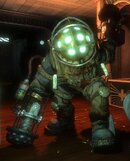I'm also glad I was doing the imperial version. It semed well enough that I got a 100% on the test. Well, actually my instructor, who happens too be a police sar diver told us when I took my rescue class that you were not too stop for breaths in the water. You are too get the victim to shore as quick as possible and then start the appropriate measures at that time. As far as the physics goes though, I'm no physics major, but have done a few calculations in my tec training, so it all seemed relative. Also, good luck on the test, it was a doozer. Oh, I didnt get the navy tables with my books and that is what the test reflects. I used my padi tables and they were within minutes. I showed my instructor the that I was right by padi tables and he was fine with that. It was more about the fact that you knew how too use the dive tables. Seems a little odd that an agency that pushes the computer would have a section on dive tables, considering they teach them in the open water class. Oh well. Again, good luck with the test





